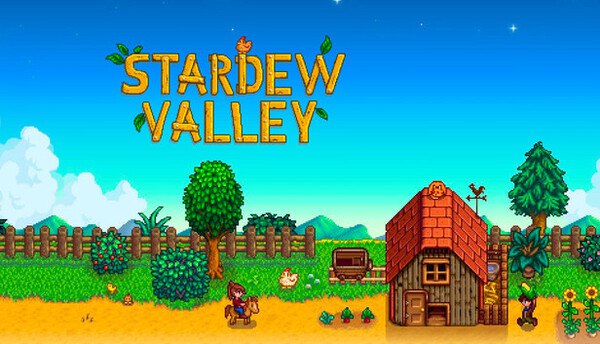Core Keeper is an indie survival sandbox game developed by Pugstorm and published by Fireshine Games. Released initially in early access, it has steadily evolved into a fan-favorite for players who enjoy exploration, base-building, crafting, and cooperative gameplay in a procedurally generated underground world. Drawing inspiration from games like Terraria, Stardew Valley, and Minecraft, Core Keeper adds its own twist with ancient technology, glowing mysteries, and real-time combat.
This article dives deep into Core Keeper’s mechanics, development history, cooperative systems, biomes, updates, and why it’s quickly becoming one of the most beloved indie sandbox games of the decade.
1. Origins and Development
Core Keeper began development as a small indie project with a clear vision: combine the charm of pixel-art exploration with the mechanics of survival and automation. It entered Early Access on Steam in March 2022, and from the beginning, players praised its tight controls, scalable co-op, and atmospheric underground world.
With consistent updates, transparent communication, and community polls, the developers at Pugstorm have successfully fostered a loyal fanbase. Unlike many early-access games, Core Keeper felt stable and polished from day one, gradually introducing deeper systems with each patch.
Its unique blend of mystery, mining, and multiplayer helped it stand out in a crowded survival genre.
2. A World Below – Setting and Exploration
The game drops players into a dark, procedurally generated cave system after being mysteriously transported to an ancient underground realm. At the center lies the Core, a dormant structure of ancient origin. As players explore, they activate this core by defeating biome bosses and uncovering hidden secrets.
The world is composed of varied biomes:
-
Dirt and clay zones near the core
-
Swampy mold dungeons and toxic caverns
-
Crystal-lined deserts and magma-infused zones
Exploration is core to the gameplay loop. Players dig tunnels, light up dark passages with torches, uncover treasure, and encounter strange ruins and environmental lore—all without surface access, adding to the immersive mystery.
3. Survival and Resource Management
At its core, Core Keeper is a survival game, and it features all the essential systems players expect:
-
Hunger and farming: Players must grow crops or cook meals to stay healthy.
-
Tool durability: Pickaxes, swords, and fishing rods wear out and must be repaired.
-
Inventory management: Efficient organization is key, especially when adventuring far from home.
Resource management becomes increasingly complex as players automate tasks. From watering crops to smelting ore, efficiency leads to faster expansion. Early challenges include surviving enemy ambushes in the dark, managing food sources, and dealing with inventory pressure while exploring.
4. Combat and Boss Encounters
Combat in Core Keeper is real-time and blends simple mechanics with gear progression and strategy. Players can choose melee, ranged, or magic-based approaches, crafting weapons that suit their style. Boss fights are a major highlight, offering unique patterns and environmental hazards.
Key bosses include:
-
Glurch the Abominous Mass – a giant bouncing slime.
-
Ghorm the Devourer – a massive insect that tunnels through the map.
-
The Hive Mother – surrounded by eggs and acid traps.
These encounters test preparation, reflexes, and environmental awareness. Bosses also drop rare materials and items necessary to activate ancient tech or unlock new game areas.
5. Base Building and Automation
Core Keeper allows players to build their underground homestead using resources collected from the world. Structures range from basic wooden walls to ornate stone halls and high-tech labs.
Players can:
-
Create multi-room farms with irrigation systems.
-
Build production hubs for smelting, crafting, and storage.
-
Set up electric-powered machines for automation.
-
Decorate with furniture, lighting, and themed designs.
Automation is one of the game’s strongest features. Later in the game, players can automate resource processing, transportation, and even defense systems—transforming their base into an efficient underground factory.
6. Cooperative Gameplay and Multiplayer
Core Keeper shines brightest in multiplayer. The game supports up to 8-player online co-op, allowing friends to mine, build, fight, and survive together. Roles often emerge organically: one player might farm while another explores, and a third manages base upgrades.
Multiplayer features include:
-
Shared map and inventory containers
-
Group boss fights and strategy planning
-
Dedicated server support for large communities
The game scales difficulty slightly based on group size, maintaining challenge and reward balance. Communication and teamwork are essential, especially when taking on tougher enemies or coordinating automation systems.
7. Skills and Progression
As players perform actions in Core Keeper—mining, crafting, running, fighting—they gradually level up specific skills, similar to RPGs. Each skill has a progression tree with meaningful perks.
Skill categories include:
-
Mining – faster digging, ore bonuses
-
Melee and Ranged Combat – attack power, critical hits
-
Running – speed boosts and stamina management
-
Fishing and Cooking – food buffs and catch rates
These skills provide long-term growth and encourage varied gameplay. The more you do, the stronger and more efficient you become, which feeds directly into exploring more dangerous areas or optimizing base functions.
8. Biomes and Environmental Diversity
Core Keeper’s biomes are not just visual changes—they introduce new mechanics, enemies, and resources. Some notable zones include:
-
Sunken Sea: water-based exploration, boats, and jellyfish enemies.
-
Molten Quarry: volcanic hazards, rare gems, and fire-based monsters.
-
Desert of Beginnings: home to ancient tech ruins and sandstorms.
-
The Forgotten Ruins: full of hidden lore, traps, and puzzle structures.
Each biome has thematic music, unique ambient effects, and resources that are critical for progression. The need to adapt—via new gear, better lighting, or smarter exploration—keeps gameplay fresh as you move outward from the central core.
9. Updates, Events, and Modding
Since its early access launch, Core Keeper has received consistent major updates, including:
-
New biomes and bosses
-
Seasonal events like Halloween and Christmas
-
Quality-of-life improvements (map filters, auto-sorting)
-
Controller and Steam Deck support
The developers have an active roadmap and often involve the community in decision-making. Players can vote on features or provide feedback via official Discord and Steam forums.
In addition, Core Keeper supports modding on PC. While still in early stages, modders are adding new weapons, visual overhauls, and tweaks to progression and loot. This opens the door to endless replayability and community-driven expansion.
10. The Future of Core Keeper
Core Keeper has a bright future ahead. With full 1.0 release planned soon and continued support beyond launch, fans can expect:
-
Enhanced world generation options
-
Deeper narrative and lore elements
-
More skill trees and character classes
-
NPC villagers and economy systems
-
Cross-platform multiplayer (planned for consoles)
Its mix of creativity, combat, and cooperation makes it an ideal game for fans of Terraria, Stardew Valley, or even Factorio. With every update, the game grows into something more refined, flexible, and rewarding.
Conclusion
Core Keeper is a gem in the world of indie survival games. It takes the best elements of base-building, exploration, and RPG progression and wraps them in a uniquely atmospheric underground world. Whether you're farming crops, building a factory, or battling monstrous bosses with friends, the game offers countless hours of meaningful progression and creative freedom.
As it marches toward full release, Core Keeper continues to evolve into a must-play for anyone who loves sandbox survival—solo or in co-op. With charm, depth, and a strong community behind it, Core Keeper is not just digging underground—it’s digging its place into gaming greatness.































